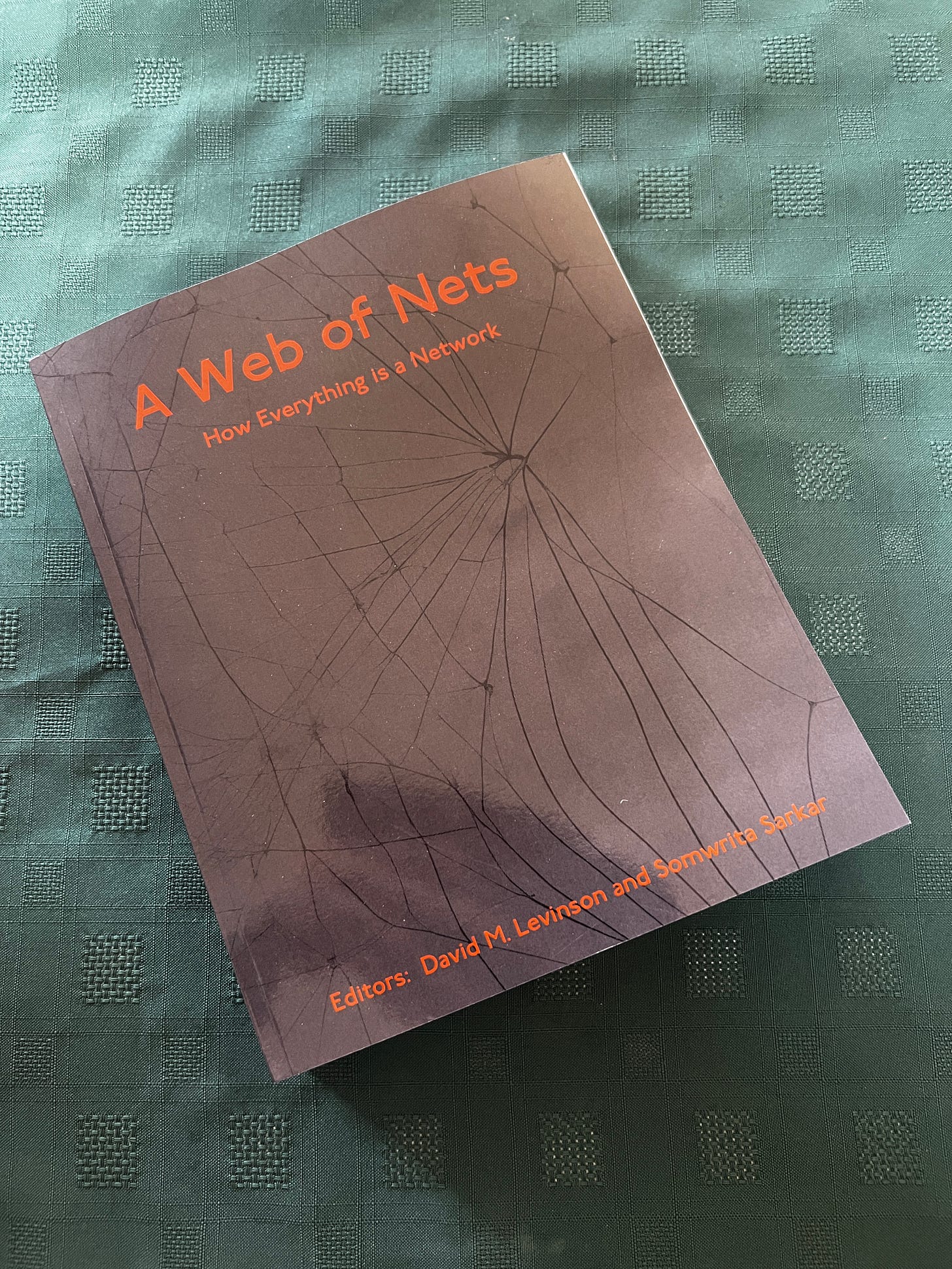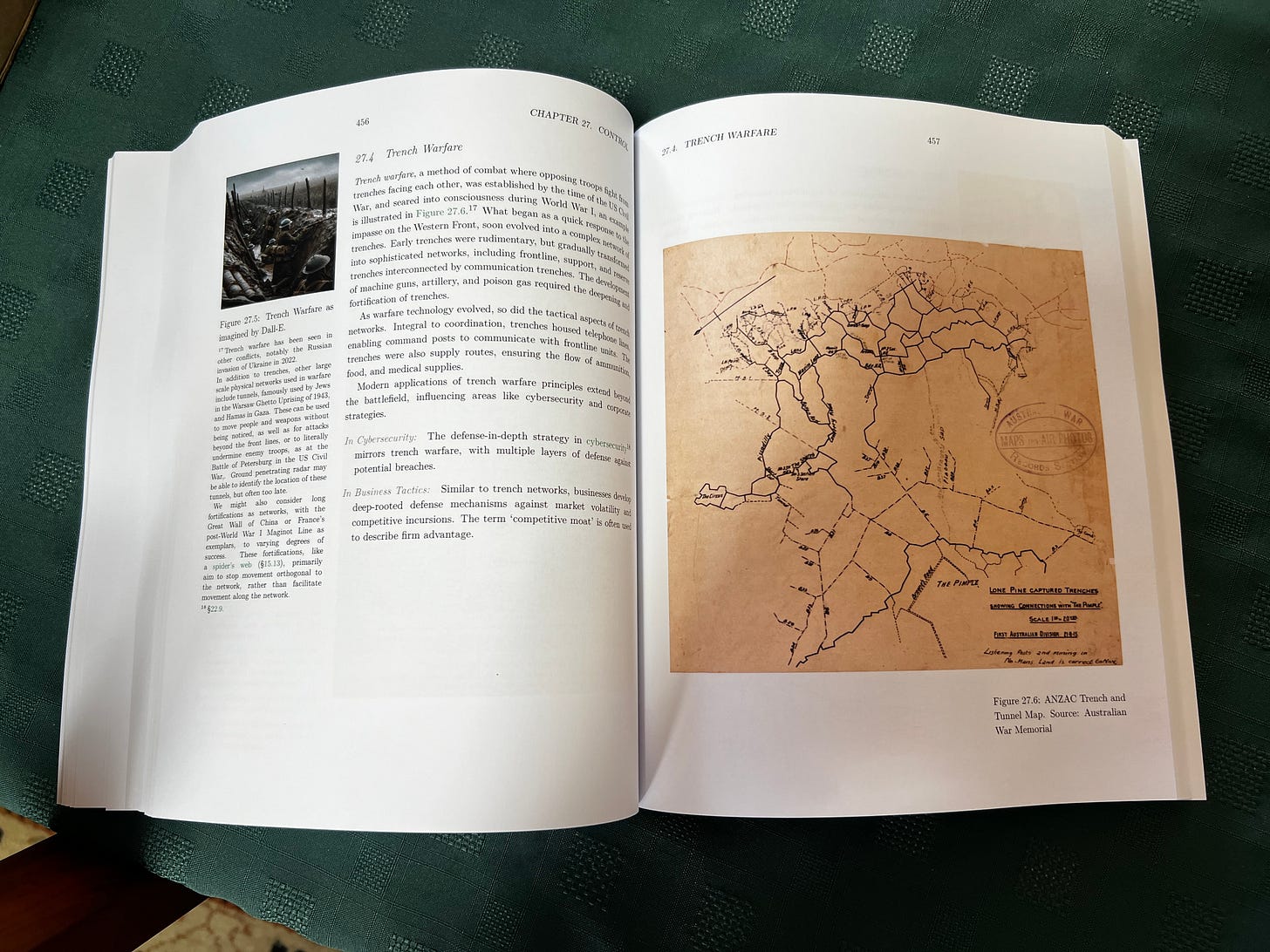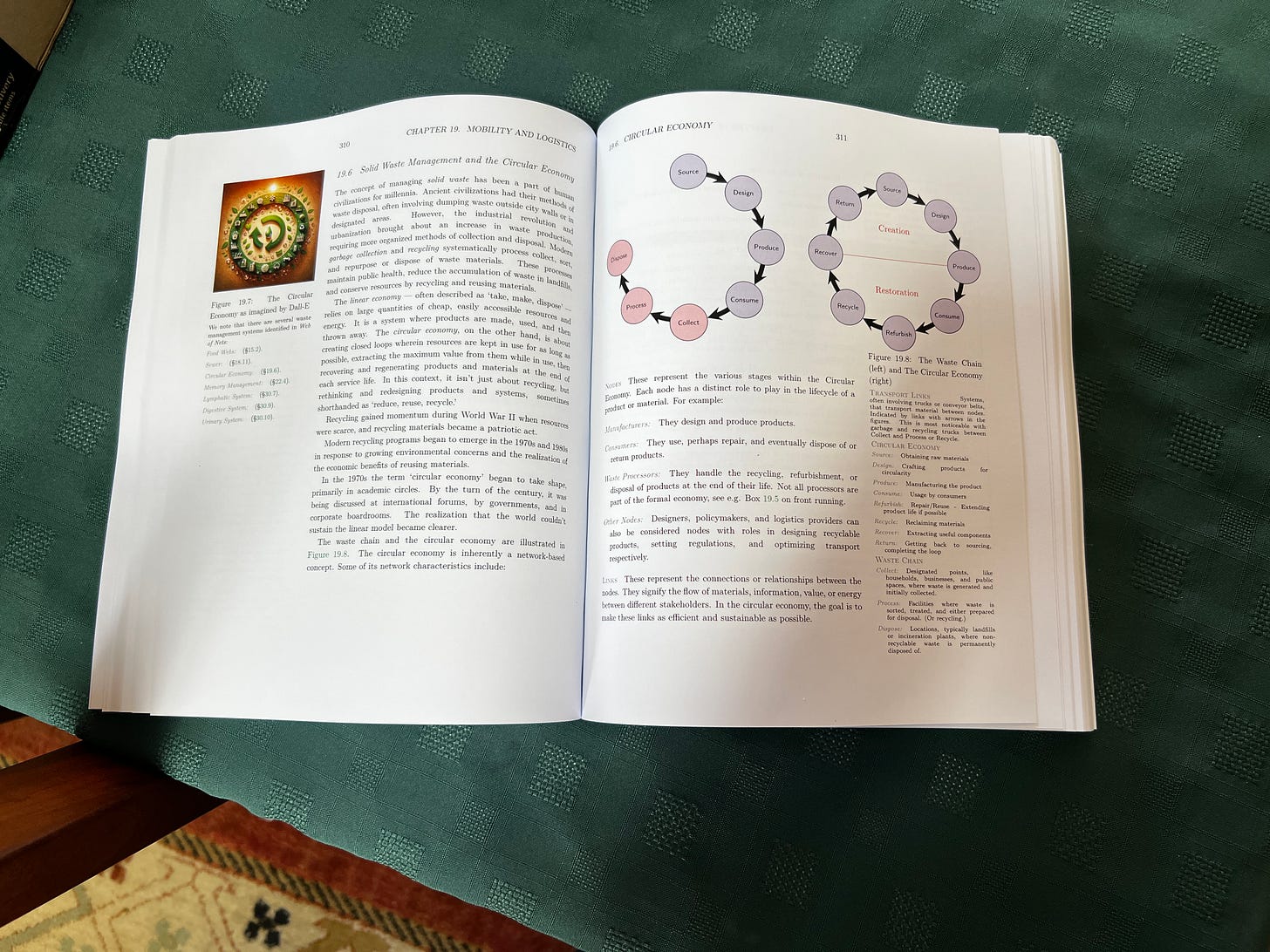On Writing with the Machine
Man-Machine Collaboration, Part 1. Let us delve into the intricate process of writing a book about networks with ChatGPT.
Obviously written collaboratively with an LLM — dml
As you may have seen, A Web of Nets came out. I think it came out well, though I am biased.
A lot of the initial writing was aided by OpenAI’s Large Language Model (LLM) ChatGPT4 through the chat interface (to be clear, this was me, not Somwrita, who is allergic to LLMs). I like to think of it as sculpting with marble. I am chipping away at the rock (the load of words ChatGPT generates) to find something meaningful. Sometimes it is sculpting with clay, and I generate additional words for the piece. Sometimes it goes wrong, and you need a new slab of marble. Fortunately, marble is fairly cheap here.
One good thing is you can instruct the marble what to look like in the first place, and tell it you don’t like adjectives, “delve”, and especially the word “intricate” which otherwise would be appended to every instance of the word “network”.
You can also tell it to draw you a picture. The book has many small Dall-E images throughout, most of which are thematic rather than informative.
But it also has a number of diagrams and technical charts, produced through TikZ, a text-based graphics language that can be used in LaTeX. Since the book was laid out in LaTeX, this was useful, since it allows the images to be edited with the code.
But rarely would the first draft of a chapter be what we wanted, ChatGPT literally cannot see what it generates (TikZ or Dall-E), so you must compile the image, take a screenshot, paste it into the window, and ask it to diagnose problems — it cannot yet do that itself [ed. Some versions can now]. In some senses this is human-assisted computing rather than computer-assisted writing.
LaTeX formatting is something at which ChatGPT was also sometimes helpful at, but not as much as you’d think. But once you gave it a very strict template, it usually complied. Not always.
It was fairly terrible at developing standardised tables. While creating the book, we created a schema that categorised networks. It is discussed in Chapter 12. The hope was that we could use ChatGPT to run through the schema and classify each network (basically each subsequent book section) according to its values. It was terrible at this. It would forget categories, it would add categories, it would invent acceptable values for categories. After days of work, this was abandoned given the lack of consistency in application.

The field is obviously changing quickly. For some reporting on this, see:
Simon Willison: Things we learned about LLMs in 2024
Other Applications
I’ve used ChatGPT for other purposes: structuring peer review replies, checking on possible hypotheses, checking metadata, sketching argument outlines, rewriting sentences and paragraphs, and rewording blog drafts, among others. I have used it to advise on whether to get a home battery or which stocks to invest in. Obviously I did not turn off my brain in these exercises.
What has that experience been like? Both productive and frustrating.
When It Works
LLMs excel at certain things:
Formatting text cleanly and quickly.
Rewriting paragraphs to ensure proper grammar, clarify tone, or tighten arguments.
Closing LaTeX brackets (usually).
Producing first drafts for basic outlines.
For tasks like these, it saves time. For summarising arguments I’ve already made elsewhere, or structuring a reply that doesn’t require new content, it is faster than starting from scratch, editing is easier than writing. It is more efficient than the alternative, but hardly the best we can imagine.
When It Fails
But it fails regularly, sometimes spectacularly:
It hallucinates references, making up DOIs, authors, and journals.
It overstates, over-writes, or lapses into generalities.
It uses too many adjectives and adverbs unless on a very tight leash.
It often repeats content, even in the same document.
It sometimes produces prose that sounds right but isn’t logically sound.
It cannot remember context across chats unless tightly managed.
It often “confidently misleads” – producing plausible, fluent output that turns out to be wrong in subtle or obvious ways.
It requires constant verification.
It’s far too positive and encouraging. I have to be terribly off-the-mainstream or politically incorrect for it to pushback.
I’ve also found it necessary to give very specific instructions. Left to its own devices, it is bloated and unhelpful. So I specify: avoid unnecessary adverbs and adjectives, avoid metaphors, use Oxford commas, no postmodern language. The model usually complies.
I’m frustrated by how often it needs correction. What I think it should be able to do, it often doesn’t. The promise of give it your notes and out comes a blog post, or journal article, or book, does not yet equal the reality.
Summary
I don’t rely on it to do thinking. I rely on it to get things into shape so I can think, to fill in some blanks, and to compare with the generic answer (which is surprisingly useful in many, many cases).
I’ve learned not to trust it without checking, so I use it cautiously, because if I trust it too much, I find errors that would embarrass me later.
Writing with an LLM today (mid-2025) is not like working with a co-equal co-author. It’s like working with an overconfident but seemingly hardworking undergraduate student – someone who turns in assignments that look good on the surface but need checking underneath.
FIN.
Keep reading with a 7-day free trial
Subscribe to Transportist to keep reading this post and get 7 days of free access to the full post archives.




